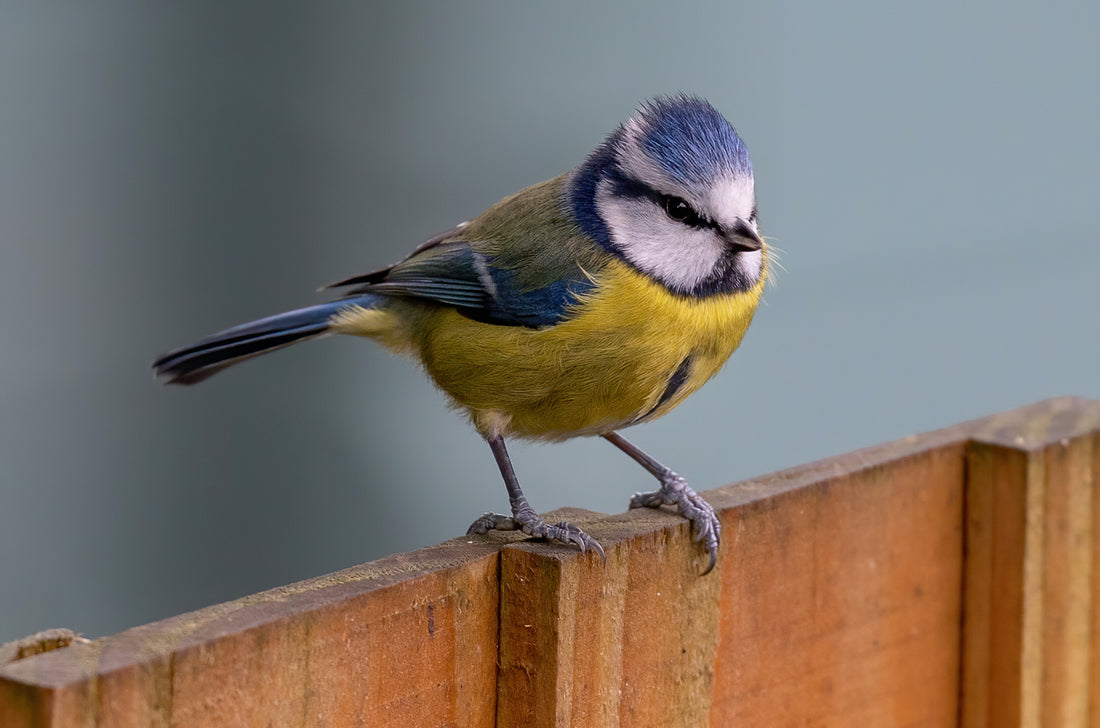We take a closer look at one of our absolute favourite bird species - the tiny bird with a big personality... welcome to our Spotlight on: Blue Tits.
The European blue tit is a small, attractive bird found throughout much of Europe, including the UK. Known for their striking blue and yellow plumage, acrobatic skills, and bold personalities, blue tits have become a favourite among birdwatchers and nature enthusiasts.
Appearance
Adult blue tits have a distinctive appearance that makes them easily recognisable. They are small birds, typically measuring around 11cm in length and weighing between 10-12 grams.
Males and females are similar in size and appearance, with the males having slightly brighter and more vivid colours than females. Their backs and wings are a bright blue, while their heads and necks are yellow, with a narrow black stripe running down their faces.
Habitat & Range
Blue tits are found throughout much of Europe, from Portugal and Spain in the south to Scandinavia and Russia in the north. Here in the UK, they are a common sight in gardens, parks, and woodlands. Blue tits are highly adaptable and can thrive in a variety of habitats, including forests, hedgerows, parks, and gardens.
Behaviour & Diet
Blue tits are highly active birds, constantly on the move in search of food. They are omnivores and have a varied diet that includes insects, seeds, berries, and nuts. Known for their acrobatic skills, they can often be seen clinging to branches and feeders upside down to reach food.
These birds are also highly social and form flocks during the winter months, roosting together in tree cavities or bird boxes to keep warm. They are monogamous and mate for life, with pairs often returning to the same nesting site year after year. Females lay up to 12 eggs per clutch, and both parents work together to incubate the eggs and feed the young.
Conservation
Despite their status as a common species, blue tits are still vulnerable to habitat loss and climate change. Deforestation, urbanisation, and agricultural intensification are all threats to their survival, as they depend on a variety of habitats for food and nesting sites. Climate change is also a concern, as it can affect the timing of seasonal events, such as the emergence of caterpillars, which are an important food source for young blue tits.
Conservation efforts are therefore important to ensure the continued survival of European blue tits. Habitat restoration, the provision of nest boxes and food sources, and the promotion of sustainable land use practices can all help to support these birds and their ecosystems.
WiFi Nest Box Cameras
We offer a range of WiFi Nest Box Camera Systems which allow you 24/7 access to the nesting birds in your own garden. Watch up close in HD on your phone or tablet as your birds build a nest, lay eggs and raise their chicks. Our nest box cameras are suitable for a variety of garden birds, including blue tits. Our new Solar-Powered Bird Box Camera System is completely wire-free and lasts all nesting season without connecting to an external power supply!
Order your WiFi Nest Box Camera System today to help provide a safe, secure nesting site for your local blue tits.







